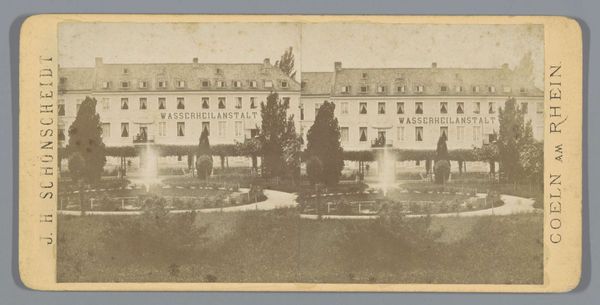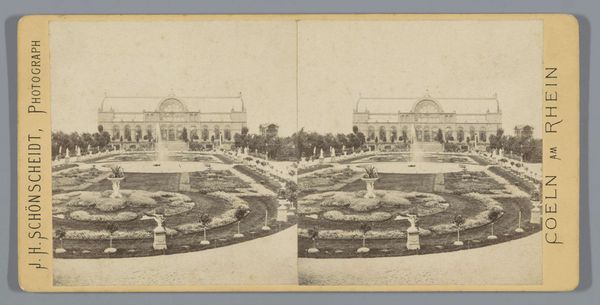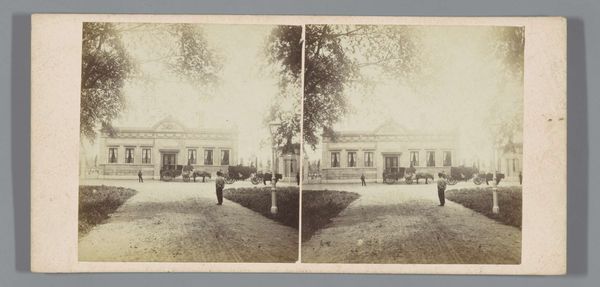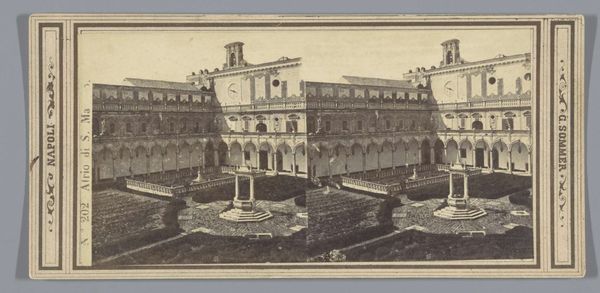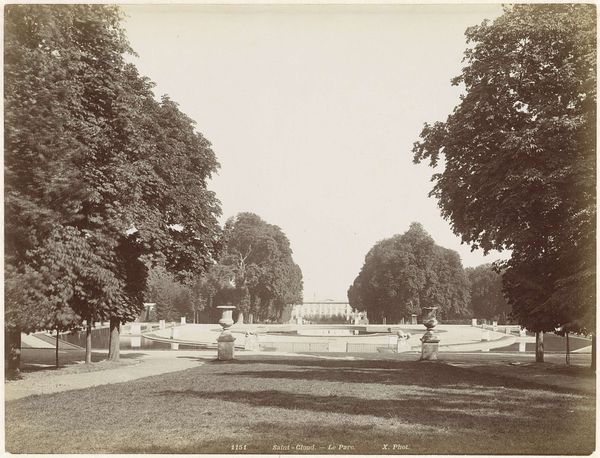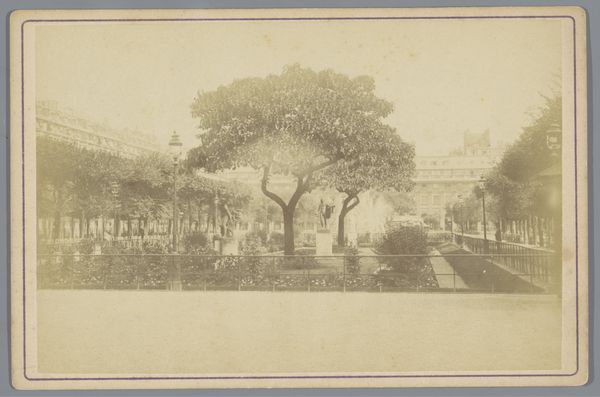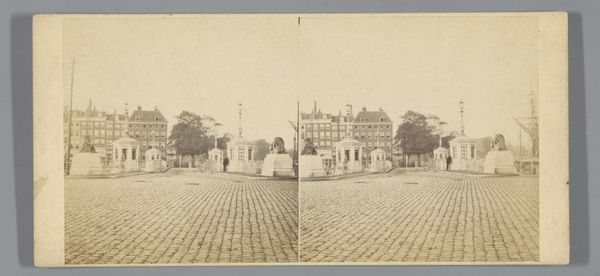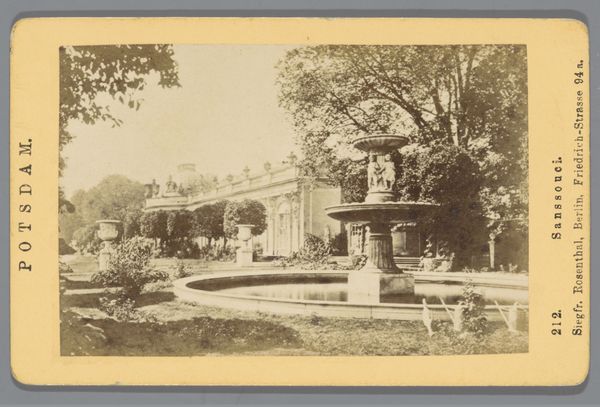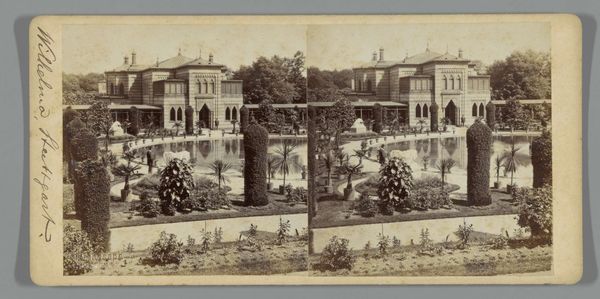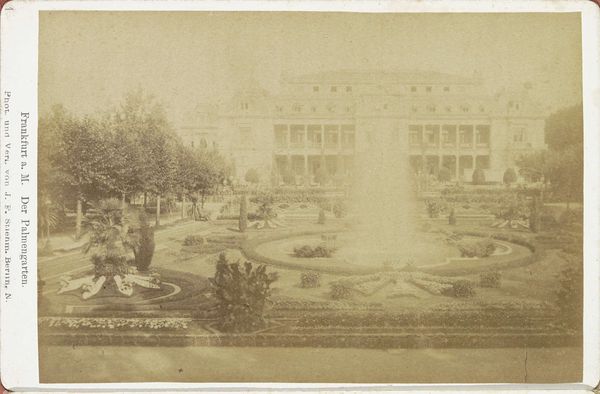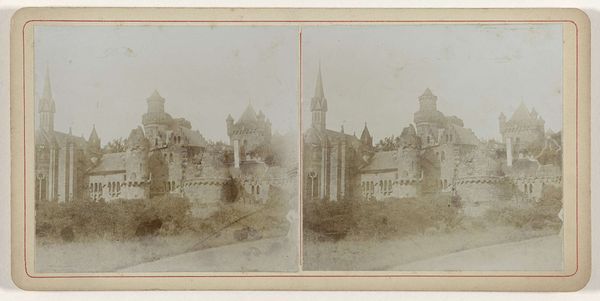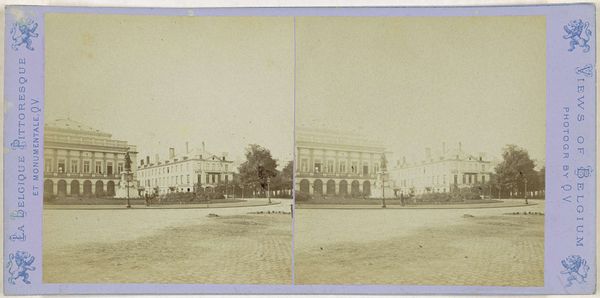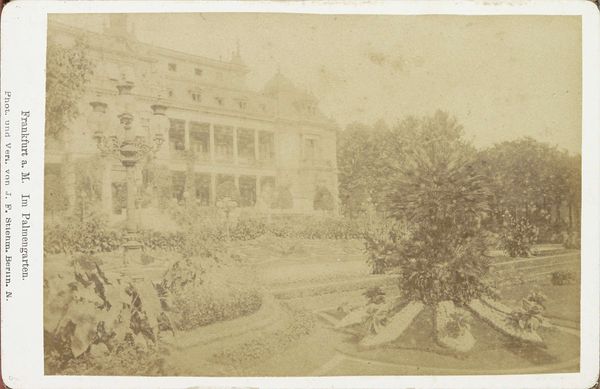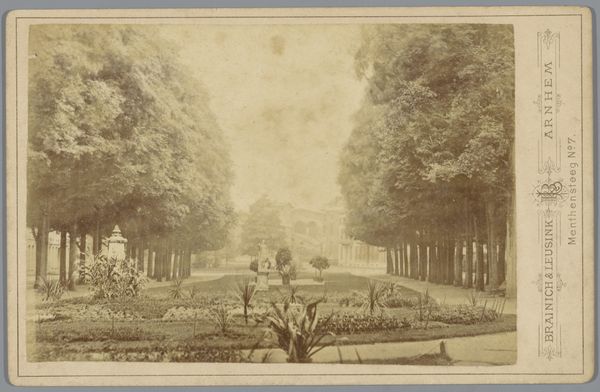
Dimensions: height 85 mm, width 170 mm
Copyright: Rijks Museum: Open Domain
Ludwig Schaller made this stereoscopic photograph of the Schlossplatz in Stuttgart using the wet collodion process. Unlike painting or sculpture, photography's connection to capitalism is evident, both in the industrial manufacture of photographic materials, and in the medium's democratic accessibility. The wet collodion process involved coating a glass plate with chemicals, exposing it in the camera while still wet, and then developing it immediately. The resulting image, a fragile negative, would then be used to produce prints on paper. The materiality of the process is critical: the photographer's skill in coating the plate evenly, judging exposure time, and developing the image quickly all influenced the final print. Stereoscopic photography, which Schaller employed here, produced a 3D effect, creating a compelling illusion of depth, and required specialized viewers, which became popular consumer items. This image, therefore, represents the convergence of technical skill, industrial production, and consumer culture in the mid-19th century. It reminds us that even seemingly straightforward images are the product of complex material processes, reflecting the wider social and economic conditions of their time.
Comments
No comments
Be the first to comment and join the conversation on the ultimate creative platform.
